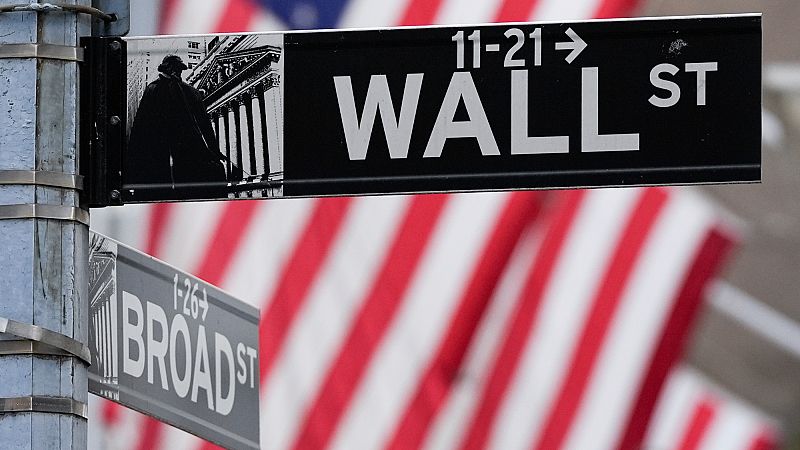
The combined market value of the United States' Magnificent Seven tech giants has now exceeded the entire output of the European Union, as a relentless rally in technology stocks stretches valuations and stokes concerns over potential market excess.
As of the close on 2 October 2025, the seven leading US tech companies — Nvidia, Microsoft, Apple, Alphabet, Amazon, Meta and Tesla — commanded a total market capitalisation of $20.8 trillion (€17.7tn), eclipsing the EU’s total economic output of $19.4tn (€16.5tn).
Nvidia alone, now the world’s most valuable company, boasts a market valuation of around $4.3tn (€3.9tn) — equivalent to the GDP of Germany, Europe’s largest economy.
This extraordinary milestone is fuelling debate. Is this a transformative moment for global capitalism, or are we witnessing the early signs of a new tech bubble?
To assess that, we must ask: What truly defines a technology stock bubble — and how does today compare to the speculative frenzy of the early 2000s?
What is a tech bubble?
A tech bubble could be defined not just by high valuations, but by a widespread disconnect between market prices and the underlying economic reality or business fundamentals.
It’s characterised by speculative fervour, excessive investor optimism, and the belief that rapid technological change will deliver limitless profits — often without regard to earnings or sustainable business models.
Renowned economist Robert Shiller describes bubbles as periods of “social contagion” — where stories of quick riches fuel mass enthusiasm, drawing in more investors and driving prices even higher, regardless of the fundamentals.
In this phase, fear of missing out overrides risk assessment.
“Speculative bubbles are fuelled by the contagious spread of market stories, which inspire enthusiasm and a desire to participate among a growing number of investors," Robert Shiller wrote in his 'Irrational Exuberance'.
Hyman Minsky, another influential economist, argued that during euphoric booms, speculation becomes the dominant force in markets.
As asset prices climb, they are increasingly justified by narratives rather than data. Eventually, a trigger — whether macroeconomic, regulatory, or psychological — bursts the illusion, leading to a sharp correction. In tech bubbles, this dynamic is often amplified by the allure of innovation.
Investors project exponential growth onto emerging technologies — from dot-coms in the late 1990s to blockchain in the 2010s, and now potentially artificial intelligence.
‘This is not a bubble, but a reshaping of capitalism’
Jordi Visser, senior managing director and head of macro research at 22V Research, argued that branding today’s rally as a bubble misses the point.
“To separate AI from the lazy shorthand of ‘bubble’, we have to recognise that what’s unfolding is not speculative mania but a structural arms race,” he said, pointing to deep investment by governments and corporations in AI capabilities as a matter of national and economic security.
Rather than being driven by unsustainable euphoria, Visser suggests that AI is accelerating a decades-long process of economic concentration. That's one where wealth and innovation are being compressed into fewer hands, be they companies, households or nations.
“Bubbles lift everyone into euphoria; concentration leaves most behind,” he said.
Still, there are signs that investor sentiment is stretching. The speed of capital inflows into AI-themed exchange-traded funds (ETFs), the speculative rise of small-cap AI names, and the dominance of a few megacaps over the broader market may not suggest a full-blown bubble, but they do indicate heightened risk.
Moreover, the structural bets being placed on AI may not all yield long-term gains. As with previous technological revolutions, not every firm will emerge a winner. The ghosts of AOL, BlackBerry and Yahoo! — once market leaders — still linger as reminders of how quickly innovation can outpace incumbency.
Are we in dot-com-like euphoria?
To assess whether we’re in a bubble similar to the late 1990s, it’s worth revisiting the numbers. The current tech rally can be traced back to November 2022, when OpenAI launched ChatGPT — a landmark moment for generative artificial intelligence that ignited a new wave of enthusiasm in Silicon Valley and beyond.
Since then, the Nasdaq 100 — the benchmark index for the largest US tech firms — has surged by 140% in under three years.
That’s impressive, but still modest compared to the dot-com era. In the three years leading up to the March 2000 peak, the Nasdaq 100 climbed more than 500%.
By that measure, we’re still far from the level of euphoria that defined the turn-of-the-century tech boom. Valuations, while elevated, are not yet extreme.
One of the most widely used indicators to assess equity valuations is the forward price-to-earnings (P/E) ratio, which compares a company’s current share price to its expected earnings over the next 12 months.
Here’s how the Magnificent Seven currently stack up:
-
Nvidia: 33.2x
-
Microsoft: 33.2x
-
Apple: 33.3x
-
Alphabet: 24.8x
-
Amazon: 32.1x
-
Meta: 25.5x
-
Tesla: 220.0x
Only Tesla appears significantly out of line, trading at a forward P/E of 220 — the highest in the Nasdaq 100 alongside Palantir, another AI-focused firm. Excluding Tesla, the group’s valuations are actually lower than the broader Nasdaq 100, which currently trades above 40x forward earnings.
In this context, while pricing is undoubtedly rich, it doesn’t yet reflect the frothy excesses of the dot-com bubble, at least not by traditional valuation standards.
Bottom Line
Today’s tech rally is extraordinary in both scale and symbolism.
That the world’s top seven tech companies can collectively outvalue the European Union’s economic output speaks volumes about the shifting balance of economic power in the digital age. But by traditional measures of euphoria — explosive price increases, irrational valuations, widespread retail mania — the current cycle falls short of the dot-com peak.
That may offer comfort to some, but the line between structural transformation and speculative excess is often thin.







